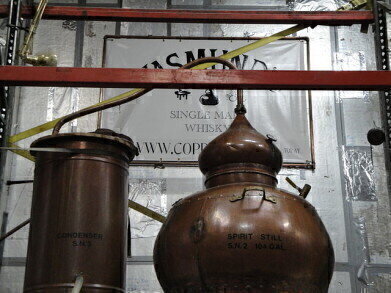GC, MDGC
Counterfeit Whisky — Chromatography Identifies the Spirit
Nov 03 2015
It’s funny the things you remember from your childhood. Your Dad shouting at you to shut the doors and turn the lights off — anything to save money. Another one of the things my Dad did to save money — and this always made me laugh — was when he topped up the bottle of Bell’s whisky (the whisky of choice in the 1970s) with a cheap substitute. The refrain of ‘they’ll never know the difference after a few’ still brings a smile now.
Costs and risks of counterfeit whisky
Although my Dad’s whisky trickery made me laugh — that isn’t the case for today’s whisky producers and connoisseurs. The growing popularity of Single Malt Scotch is helping to expand the Scotch whisky export market to approximately £4 billion — making it one of the UK’s biggest export earners. But counterfeit Scotch is thought to cost the Scotch whisky industry close to £500 million per year — which means that it is costing each of us money through lost taxes.
It is not just a financial cost though — adulterated whisky often contain dangerous quantities of methanol or other solvents — with paint thinners being found in some samples —meaning people are killed or hospitalized each year as a result of drinking counterfeit spirits. So how can we spot fake whisky?
Using congeners to identify the brand
A congener is simply a minor chemical component in a wine or spirit that adds character or a physiological aspect to the drink — colour, taste or smell. In the case of the whisky, the congeners can be formed during the distillation and fermentation process or when the whisky is maturing in the barrels. Different congeners will be formed at different parts of the process and include aldehydes, esters, acids and alcohols.
It is the congeners that give the individual characteristics of colour and most importantly flavour to a brand of whisky. Because the congeners are formed as part of the process and with each whisky having differences in its process — congeners can be used to identify and check for adulteration. Let’s take a quick look at how chromatography can be used to make sure we are drinking genuine Scotch.
Gas chromatography of congeners
Gas chromatography is one of the most common techniques used in the analysis and authentication of whisky samples. GC is an ideal technique when you need to analyse the volatile components of a sample. In the case of whisky — it has many different volatiles and one set that are of interest are the higher alcohol congeners: propan-1-ol, 2-methylpropan-1-ol, 2-methylbutan-1-ol and 3-methylbutan-1-ol.
The ratio of these compounds to each other is different in each whisky due to process differences —such as barrel type or water differences. By mapping the higher alcohol congeners from each of the Scotch distilleries, a fingerprint of each Scotch variety can be built up. Using GC to analyse adulterated samples is discussed further in the article, A Matter of Taste....Flavour Profiling by GCxGC-qMS/FID on Chromatography Today.
Neat or water. How do you take your Malt?
Image by Carly & Art
Events
May 11 2025 Vienna, Austria
May 18 2025 Tempe. AZ, USA
May 21 2025 Birmingham, UK
Jun 01 2025 Baltimore, MD, USA
Jun 15 2025 Bruges, Belgium














